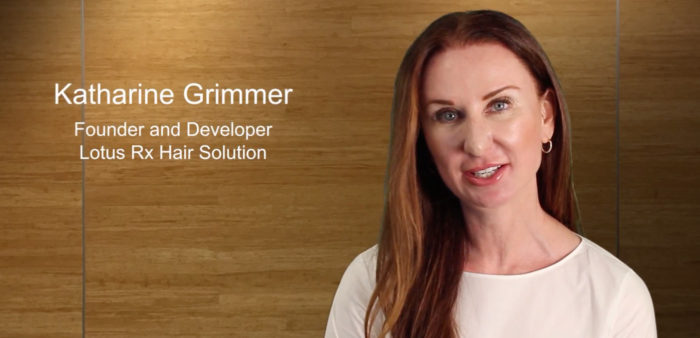
Diversity Managers: 10 Key Job Skills, Salary, and Required Education
Managing a diverse workforce has become vital in a globalized business world. Diversity Managers and human resources professionals with related skills are in demand. According to Tech Republic:
While chief diversity and equality officers were rare a decade ago, today, about one in five Fortune 1000 companies have one. Airbnb, Dropbox, Pinterest, and Twitter have all filled diversity manager positions [Sept. 2016 – Sept. 2017].
The median salary for diversity managers is $77K a year and higher for leadership positions: sometimes called Diversity VPs, Diversity Recruiting Managers, or Diversity and Inclusion Officers.
Helping put an end to cultures of white privilege, sexual harassment, disability, and religious discrimination can be part of the motivation that brings people to this career. For many, a diversity management career is part of a larger passion to demonstrate the positive effects of ethical human resource practices on company outcomes. The field is dynamic and constantly changing. Managing Gender Transition in the Workplace is the most recent frontier in ensuring safety and equality among workers. For many, a diversity management career is part of a larger passion to demonstrate the positive effects of ethical human resource practices on company outcomes.
10 Diversity Job Skills
To be successful in this field, management-level diversity experts have to apply these 10 key job skills.
1. Recruiting
To succeed against global competition, companies must look beyond their own local areas and national boundaries for key resources and new markets. Globalization represents a tipping point for diversity company practices. According to Dr. Marianne Koch, Chair of GGU’s Human Resources degree programs, recruiting an international team or coordinating with an office in, say, Mumbai or Dublin, Ireland, is an important contribution a diversity manager can make.
This offshoring is also affecting the development of HR software. CIO’s senior writer contributed an excellent article on how human resource software startups, such as Jopwell, are promising that their solutions will help release pent-up diversity resources in the job market and let companies reap the business benefits of a diverse workforce. Public recognition of a company’s commitment to diversity can attract more candidates, in the case of top-ranked EY and second-place Kaiser Permanente, which is led by African-American and GGU Graduate Bernard J. Tyson.
2. Implementing a Diversity Initiative
Managing diversity requires a well thought out plan, crafted to fit specific organizational needs and conditions. The Society for Human Resource Management (SHRM) describes the main phases of a diversity initiative as data collection, strategy-design to match business objectives, implementation, evaluation, and continuing audit of outcomes. For example, the Chief Diversity and Inclusion officer at SAP developed a three- to five-year corporate diversity strategy, focusing on, “gender intelligence, generational intelligence, cultures and identity, and differently-abled or disabled people.”
3. Data-Driven Practices
“For human resources professionals, data-driven results get the attention of the C-Suite,” says Dr. Koch. “It is a must for executive-level diversity experts.” Ji-A Min, head data scientist for Ideal.com, a company bringing AI to human resources software, says that the mandate for a diversity or equality officer is to “identify quantifiable, measurable diversity KPIs…for example… [to] equalize the pay between male and female employees of the same tenure, level, and performance within three months [and] demonstrate the ROI of workplace diversity by linking diversity data to business outcomes such as increased revenue.” Software solutions such as Payscale promise retention outcomes from data-driven salary management and can be used to analyze a diverse workforce. A Diversity Manager who can demonstrate quantitative results will be a step ahead of the competition.
4. Communication
By many accounts, communication is the number-one skill needed in business, and this is particularly true in diversity management. This is a matter of language, nonverbal communication, personal physical space, religious convictions, or sexual or gender identity.
5. Leadership and Management
Diversity Managers have increasing responsibility and are often brought in at the VP level. Dr. Koch says: “Leading a diverse workforce requires knowledge of who one’s workers are and how they perceive themselves and want others to acknowledge them. An awareness of these things will bring out the best in the workforce as workers feel accepted and legitimate. It sets the tone, as well, for a culture of inclusion and respect.”
6. Training
Many companies choose to implement Learning and Development programs online. One sophisticated option is Law Room, which goes beyond a dry webinar or PowerPoint presentation and includes video scenarios–and invites trainees to reflect on what they have seen. It also dives into the complexities of reacting to a report of harassment that is consistent with the law and the experience of the reporting party. Live training opportunities are abundant in the San Francisco Bay area including the well-established Paradigm Consulting Group that provides ethics and compliance training.
7. Counseling and Advising
Interpersonal — sometimes included among “soft” skills — are in high demand for this career. Job sites such as Glassdoor and LinkedIn often list “counseling” and “advising” as necessary skills. Transitions are unsettling, and those of the old guard may need help adjusting their attitudes, behaviors, and practices to the newly diverse workplace. At the same time, new entrants into the workforce need support and encouragement. In fact, implementing Diversity Mentoring programs, according to Scientific American, can be one of the most successful ways to increase the amount of African-American, Latino / Latina, Asian (female and male), and white female managers at an organization—potentially by almost 40 percent.
8. Knowing the Law
Legal and regulatory changes happen every year at the federal, state, and even local levels. In California, new 2017 regulations regarding transgender identity and expression include staff training. Companies with the best of intentions can still fail to meet their legal obligations unless they monitor changes and plan how to put them into practice.
9. Knowing One’s Prejudices
James Wright, a Diversity and Inclusion Strategist, lists self-awareness as one of the Five Things to Know before Building a Career in Diversity and Inclusion. “Bias is a part of the human anatomy,” he says, citing the book Blindspot: Hidden Biases of Good People as valuable research.
10. Responding to Innovation
Innovation is often listed as a competency for Diversity Managers because they need to keep up how work is accomplished in a changing world — and how a diverse workforce is deployed to support strategic goals. Dr. Koch even gives the examples of working side-by-side with R2D2-like “nurses” that bring patients meds or the electronic sentinels at the new Amazon Go stores.
What education is needed?
Certificates and boot camps are always an option for getting your feet wet, but for executive or management positions, a master’s degree in human resources is often required.






